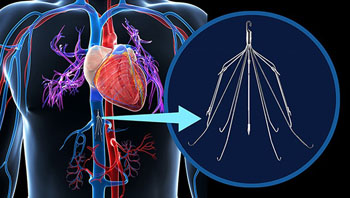Tag: thrombosis

Transcatheter Aortic Valve Replacement in Younger Individuals
When a patient has an aortic valve that requires replacement because the native valve is diseased, 2 types of valves can be used - mechanical valves or bioprosthetic valves, also known as tissue valves. Bioprosthetic valves... read more

Magnet guidance reduces misplacement of subclavian vein catheter in internal jugular vein
The internal jugular vein (IJV) and subclavian vein (SCV) are the two most commonly used insertion sites for central venous catheterization (CVC). A multicenter clinical trial compared commonly used insertion sites and... read more

Testosterone VTE Risk; Novel Clot Buster Flops Again; Saturated Fat Culpability
The venous thromboembolism (VTE) risk warned about with testosterone treatment appears to be transient, peaking within 6 months after starting and then gradually declining.... read more

Care of the eye during anaesthesia and intensive care
Perioperative eye injuries and blindness are rare but important complications of anaesthesia. The three causes of postoperative blindness are ischaemic optic neuropathy, central retinal artery thrombosis.... read more
Bleeding Management and Reversal Strategies for the DOAC Patient: New and Future Approaches
Todd Fraser, MD, speaks with Scott Kaatz, DO, FACP, SFHM, about his talk given at the 45th Critical Care Congress on, Bleeding Management and Reversal Strategies for the DOAC Patient: New and Future Approaches. Dr. Kaatz... read more

IVC Filters Provide No Advantage in Trauma Care
Trauma patients who received an inferior vena cava (IVC) filter to prevent pulmonary embolism (PE) had no survival advantage, according to a new study.... read more

VTE history in female relatives increases absolute thrombotic risk
A family history of thrombosis in women may increase the risk for venous thromboembolism in women taking oral contraceptives, according to the results of a cohort study.... read more








